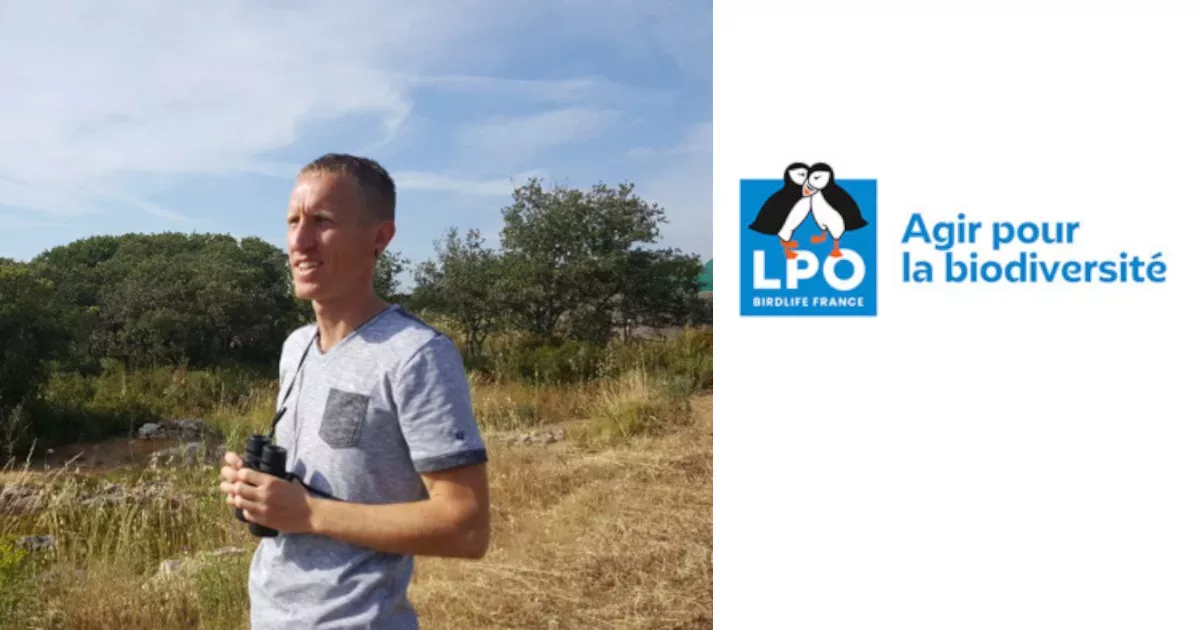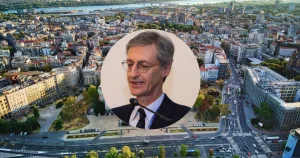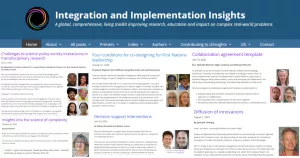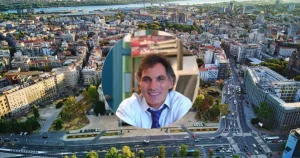Nicolas Saulnier: “An association that contributes to the preservation of biodiversity needs facts to rely on”
The representative of associations in the steering committee of the University of Montpellier’s science shop explain why it is important for associations to be part of such a body. And why it can be difficult too.

Why are you a member of the Trait d’Union steering committee?
Nicolas Saulnier: The activities of the Ligue de Protection des Oiseaux Occitanie (LPO, Birdlife France) are focused on two actions: the protection of nature and the mobilization of citizens. The latter serves the former: we carry out a variety of activities to mobilize citizens to help protect nature, and to participate in the collection of data on its health. We have developed databases and participatory science tools, sometimes in conjunction with the academic world. In 2017, when the University of Montpellier organized Assises Sciences-Sociétés (science society forum), they invited the headquarter, which asked me to represent LPO. The idea for the Trait d’Union science boutique was born at this meeting.
Did you feel the need for it at the time?
N. S.: It was a discovery: I was not familiar with this type of structure and approach. The conference, and the work that followed in prefiguring and co-constructing the science shop, made me realize that the natural sciences and life and earth sciences are not the only approach to optimizing biodiversity protection: the human sciences are just as important. They help structures with divergent or even conflicting interests to come together and work collectively. And today, we realize that the challenges of protecting biodiversity, and the environment, are mostly linked to human commitment, to the ability to make decisions, and to the ability to evaluate that commitment. Progressively, I became involved in this dynamic. Especially as there was a concrete aspect from the outset, with a call for projects, to which we submitted.
What project did you propose?
N. S.: We were then working on the impact of wind farms on biodiversity. We thought that some of the devices supposed to reduce bird and bat mortality were not as effective as their promoters claimed. To evaluate these devices, we proposed to launch a research project with the CNRS Centre d’Écologie Fonctionnelle et Évolutive in Montpellier: this took the form of the “Réduction de la Mortalité Aviaire dans les Parcs Éoliens en Exploitation” (MAPE) project, which was deployed over several time scales, with internships, doctorates and post-doctorates, and is still ongoing today. From the outset, Trait d’Union has been committed to sustainable development projects. I joined the steering committee with the aim of focusing on biodiversity.
Who was in the steering committee?
N. S.: Initially, it brought together academics, institutions and non-academics. I represented the college of non-academics. Over the past year, the steering committee has opened up to other associative structures, which has enabled us to consolidate the balance between academics and non-academics.
Who are the other associations involved in Trait d’Union?
N. S.: Environmental education and sustainable development associations, as well as circular, social and solidarity economy structures. There are also associations founded by scientists. Today, the aim is to bring these different players together. But it must be acknowledged that, for the associations, it can be difficult to participate, due to their precarious financial situation and to the time availability of their leaders and members, while academics can sometime value their participation in this type of body, as part of the research work. There is also a cultural difference: for researchers, such participation is more or less self-evident, which is not always the case for associations.
Was it easy to convince LPO members and managers of the importance that you spend time on this project?
N. S.: As it started on the request of LPO, there was already an indication of the value of taking part in this initiative. Also, in the Hérault département, we were used to working with researchers, particularly within the framework of the National Action Plans, run by the French government to implement European and international commitments to protect nature. The territorial council and the board of directors of the local LPO clearly understood that it was in our interest to forge links and work on these types of dynamics. The fact that we were involved in a project from the outset helped a great deal: an association like ours can’t just be a think tank, it has to take action too. However, I think this commitment is also due to personal affinities: if I were to withdraw tomorrow, I’m not sure there would be the same interest.
Does your participation in the steering committee of Trait d’Union take place during your working time for the LPO?
N. S.: Yes. I do not sit on Trait d’Union as an individual, but as a representative of an association. We have also managed to ensure that the associations taking part receive a small allowance, which is not nearly as much as we would need, but which however exists, even if it is recurrently being debated.
Does this financial participation by Trait d’Union also extend to projects supported by the science shop?
N. S.: No, it only concerns participation in the steering committee. Participation in research projects is financed from our own funds.
Who participates in LPO research projects?
N. S.: The LPO is a volunteer-based association, with salaried staff to back up the volunteers’ efforts. However, for research work, you need interest and skills: researchers from different academic bodies sometimes accompany us and facilitate interaction with the research community. In other places, LPO has a local scientific director or a local scientific committee. This is not yet the case in Hérault.
What about your ordinary members?
N. S.: Members join us because they feel concerned with the ecological reality of our environment. Some are already trained and competent naturalists who are already working on the environment. Others do not have these skills, and have to acquire them, by taking part in outings, preparing and manning stands at various events, taking part in events and activities. Gradually, these people can contribute to the work of participatory science. In particular, our Faune Occitanie platform, an online naturalist database, enables anyone to enter information. At first, this can be done on an opportunistic basis: if you happen to see a species while out walking, you can create an entry in the database. Then we get volunteers to create entries using a scientific protocol. This enables them to contribute to participatory projects. Even if they do not have great skills, they can also work on image and species recognition. And some people are motivated by particular topics and create, or participate in, working groups, which also enables them to realize the need for an academic approach, to draw up and optimize diagnoses on the state of our environment. It is important to work on facts, to act effectively, without bias or prejudice.
Could you give an example of such a working group?
N. S.: We are setting up working groups on agrobiodiversity, to help farmers integrate actions to promote biodiversity. Similarly, about nature in the city, we work with developers and urban planners: how can we get them, with management plans at different scales, to rationalize their findings, and propose measures that are favorable to biodiversity, and then evaluate them? In all this, we systematically need the human sciences, life and earth sciences, and statistical sciences.
Interview by Luc Allemand
SUBSCRIBE TO OUR NEWSLETTER
To stay up to date with our projects and the development of the EHC
Read more articles

Gian Francesco Giudice: “Ethical responsibility is essential in fundamental research”
From hypothetical black holes to environmental impact studies, CERN navigates risk, transparency, and moral responsibility at the frontiers of human

Dealing with the complexity of society and environment
A global toolkit for tackling complex problems with more than 600 different methods Ever wish you had a free toolkit

The Moon & the Global South: Voices, Risks & Promise
Researchers warn that without inclusive governance, the Moon could become “a new arena for old patterns of exclusion” When rockets

Borko Furht: “AI shouldn’t be given much autonomy without maintaining accountability”
Beyond Superintelligence: The Real Challenges of Keeping Humans ‘In the Loop’ Borko Furht is a professor in the department of